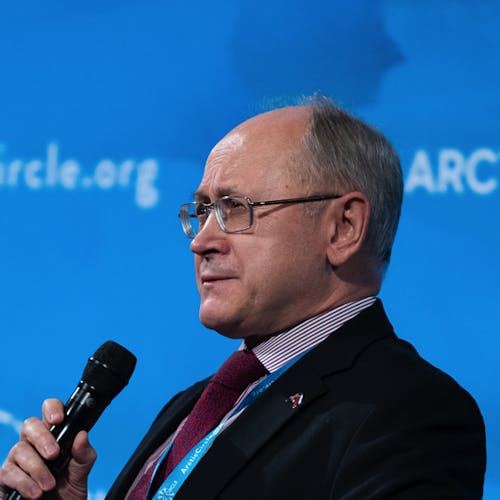One of the stunning news I learned when coming back to Moscow after six and a half years’ service in Reykjavik was that during this time annual cargo shipments on the Northern Sea Route had increased 8 times. Up to 33 million tons, by far surpassing historic USSR 1987 record of 6 million tons.
The current volume is obviously quite modest compared to the Suez or Panama canals cargo transit (1031 and 469 million tons correspondingly in 2019). However, the dynamic is impressive, and Russia intends to sustain it, pushing the NSR figure further to 80 million tons in 2024 and 130 million in 2035. Authorities in Panama, Egypt, Singapore and elsewhere are beginning to follow the trend with growing attention.
Development of the NSR is the backbone of the national Arctic strategy. The NSR is viewed, for a good reason, as a main artery of the Russian Arctic. It has three main tasks, to:
- Become an energy superhighway for export of hydrocarbons and other natural resources of the Russian Arctic;
- Supply everything needed to the ports and new “points of economic growth” of the Arctic Zone of the Russian Federation (AZRF);
- Assure smooth international transit.
A detailed plan of practical measures to develop the NSR infrastructure up to 2035, backed by the budget, was adopted by the Russian Government in December 2019. It provided, inter alia, for:
- Renovation of ports;
- Building of SAR (search & rescue) and auxiliary fleet;
- Expansion of navigational and hydrographic surveys;
- Building new icebreakers;
- Stimulating cargo shipments and international transit;
- Boosting local energy supply, staff education, encouraging domestic shipbuilding and assuring environmental safety.
Even in the pandemic 2020 the Government strictly controlled implementation of this plan and pointed to the areas which lagged behind the schedule, such as building new SAR and auxiliary vessels.
Ensuring safety and security of the NSR is one of the obvious tasks of the Russian military. SAR facilities and capabilities of Emercom and Ministry of Transport will also be seriously enhanced. The 2011 Arctic SAR Cooperation Agreement will play a role.
Safety will also be assisted by modernization of communications. Murmansk and Vladivostok will be connected by 12,5 thousand km underwater high-speed optic-fiber cable with links to all major points along the NSR. Constellation of high-orbit navigation satellites over the Arctic will be launched and aviation transportation to the AZRF will be expanded.
Important management reform is under way, aimed at attaining transparency and immediacy of navigation information and all administrative decisions – collecting all this data on one open digital platform. At the end of the game it will additionally bring enhanced safety to the users of the NSR.
Thawing of ice, coupled with technology breakthroughs, widen the navigable period of the NSR, especially of its troublesome eastern part, thus allowing shipments to be more regular and predictable. Before, this window of opportunity usually opened in June and closed in November. But in May 2020, Sovcomflot successfully sent its Arc7 LNG super-carrier along the NSR in a record-early voyage. In January 2021 (nobody did it so late before) another record was broken when two LNG Arc7 super-carriers successfully sailed without icebreaker escort, one from Sabetta to China, another – the opposite way. More so, driven by the rising LNG prices because of cold winter and Panama canal congestion, Novatek is planning to ship LNG from Sabetta to Japan in February and maybe even March 2021, albeit with icebreaker escort. This would prove right an estimation of the NSR operators that today the route may be used 10 months a year, and even year-round when the “Leader”-class 120 MWT icebreakers appear on the scene.

